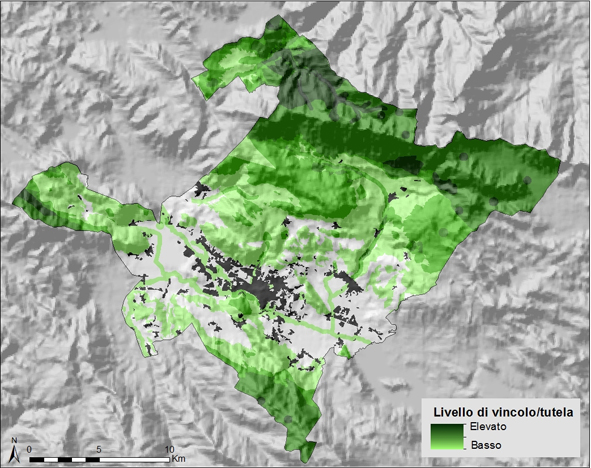“Vuoti urbani” e“suoliliberi” per la qualità ecologica La rigenerazione post-sismica nel Comune dell’Aquila
Abstract
Dopo il sisma abruzzese del 2009 è emerso il ruolo fondamentale che assolvono i vuoti urbani e, più in generale, gli spazi liberi. Alcuni di questi luoghi “non costruiti” hanno però manifestato una importanza diversa da altri, sia nello svolgimento delle funzioni di emergenza, sia nel recupero successivo. Anche in una città estremamente dilatata, che dopo il sisma lo è diventata ancor di più, i vuoti urbani di qualità sono stati utilizzati più efficacemente e più velocemente sono tornati al loro uso precedente. La stessa cosa non sta accadendo per gli spazi liberi a diverso titolo che, seppur intensivamente usati per le funzioni richieste dall’evento sismico, presentano oggi molte incertezze sul loro destino futuro che non esclude l’abbandono e il degrado. Molte di queste aree hanno una importanza centrale per garantire e migliorare le funzioni di connettività ecologica di un territorio urbano interposto tra i maggiori serbatoi di biodiversità dell’Appennino Centrale. Le scelte di recupero delle aree emergenziali che verranno attuate nei prossimi anni saranno strategiche per riconoscere e gestire i varchi ecologici residuali, ormai molto ristretti e prossimi alla totale chiusura.Il lavoro illustra queste dinamiche mediante dati e valutazioni messe a punto per il nuovo strumento urbanistico della città in via di elaborazione.
Downloads

Copyright (c) 2015 Bernardino Romano, Serena Ciabò, Lorena Fiorini, Alessandro Marucci, Francesco Zullo

This work is licensed under a Creative Commons Attribution 4.0 International License.
Gli autori che pubblicano su questa rivista accettano le seguenti condizioni:- Gli autori mantengono i diritti sulla loro opera e cedono alla rivista il diritto di prima pubblicazione dell'opera, contemporaneamente licenziata sotto una Licenza Creative Commons - Attribuzione che permette ad altri di condividere l'opera indicando la paternità intellettuale e la prima pubblicazione su questa rivista.
- Gli autori possono aderire ad altri accordi di licenza non esclusiva per la distribuzione della versione dell'opera pubblicata (es. depositarla in un archivio istituzionale o pubblicarla in una monografia), a patto di indicare che la prima pubblicazione è avvenuta su questa rivista.
- Gli autori possono diffondere la loro opera online (es. in repository istituzionali o nel loro sito web) prima e durante il processo di submission, poiché può portare a scambi produttivi e aumentare le citazioni dell'opera pubblicata (Vedi The Effect of Open Access).
